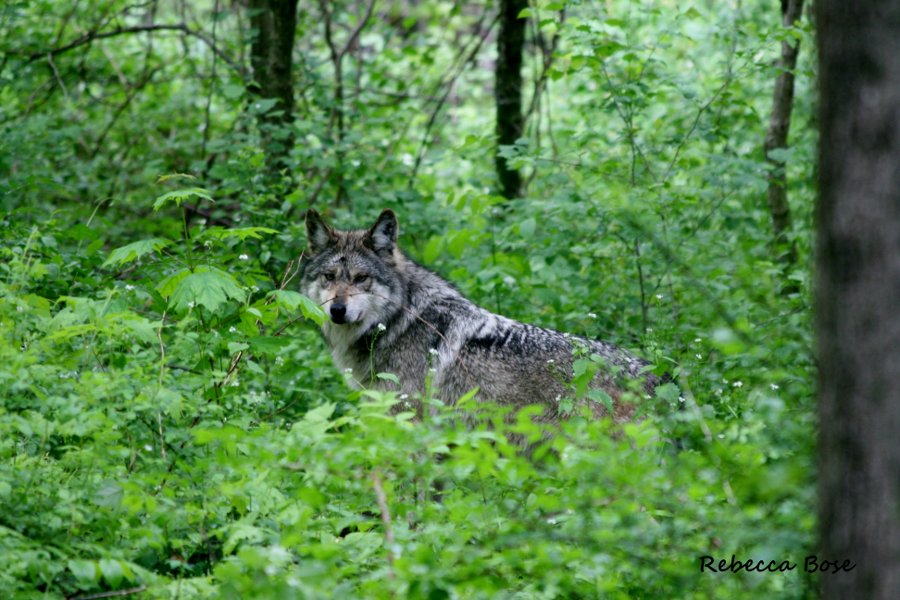In the News: Greenlee BOS says no to joining wolf lawsuit

The letters to the editor page is one of the most widely read, influential parts of the newspaper. One letter from you can reach thousands of people and will also likely be read by decision-makers. Tips and talking points for writing your letter are below, but please write in your own words, from your own experience. Your letter will be most effective if you focus on a few key points rather than trying to cover all of these.
Talking points specifically about the rule change:
- New management rules for endangered Mexican wolves have some of the changes needed but other provisions that set a low cap on numbers, allow more killing of these wolves and keep them from habitat above I-40 will prevent recovery.
- A good change in the new rule is that it expands the area where new wolves can be released into the wild where they belong. The Mexican gray wolf is the most endangered mammal in the U.S. with only about 83 in the wild. Additional wolves must be released into the wild now to increase the genetic health of the species. Numerous wolves are in captive breeding facilities around the country, prepared for, and awaiting, release.
- Expanding the area where the wolves can live is another positive change, but there should be no boundary at I-40. The boundary set in the new rule will keep Mexican wolves from establishing new populations in the areas north of I-40, which scientists say is necessary to their recovery.
- There should be no cap on the number of Mexican wolves allowed to live in the wild.Top carnivores like Mexican gray wolves play an important role in ecosystem restoration and will balance themselves with their prey as they did for millennia before humans intervened.
- The US Fish and Wildlife Service should focus on increasing the wild population’s genetic health and moving the wolves towards recovery, rather than promising that lobos can be killed if they increase beyond an arbitrary number.
- USFWS should not allow more killing of critically endangered wolves. The proposal will push Mexican gray wolves towards extinction by allowing many more of them to be killed under all kinds of reasons that have nothing to do with science or recovery, including for eating their natural prey to survive. With so few in the wild, every wolf is important. These native lobos need more protections, not less.
- Wolves need freedom from boundaries. Given room to roam, the wolves will establish themselves in suitable areas with adequate game. The USFWS proposal does not allow wolves to establish new packs and populations in additional areas that are essential to their recovery.
- The USFWS should designate Mexican gray wolves as essential. By labeling all of the wild wolves as “nonessential” in the new rule, the USFWS ignores science and the reality of 16 years of experience with reintroducing wolves.The 83 wolves in the wild have up to four generations of experience in establishing packs and raising pups and are over 22% of all of the Mexican wolves in the world.The fourth generation wild lobos are not expendable and are essential to recovering this unique subspecies of wolf.
- The USFWS needs to quit stalling and complete a comprehensive recovery plan.USFWS admits that their 1982 recovery plan is not scientifically sound and does not meet current legal requirements, yet it has not moved forward with recovery planning and the new rules ignores recommendations from scientists on the recovery planning team.
General Talking Points about the value of recovering Mexican wolves:
- Wolves are a benefit to the West and are essential to restoring the balance of nature.
- Polling has shown consistently that the vast majority of Arizona and New Mexico voters support the Mexican wolf reintroduction.
- Wildlife biologists believe that Mexican wolves will improve the overall health of the Southwest and its rivers and streams — just as the return of gray wolves to Yellowstone has helped restore balance to its lands and waters.
- Mexican gray wolves are unique native animals. They are the rarest, most genetically distinct subspecies of gray wolf in North America and one of the most endangered wolves in the world.
- Wolves generate economic benefits – a University of Montana study found that visitors who come to see wolves in Yellowstone contribute roughly $35.5 million annually to the regional economy
Make sure you:
- Thank the paper for publishing the editorial.
- Do not repeat any negative messages from the article. Remember that those reading your letter will not be looking at the article it responds to, so this is an opportunity to get out positive messages about wolf recovery rather than to argue with the original article.
- Keep your letter brief, <500 words.
- Include something about who you are and why you care: E.g. “I am a mother, outdoors person, teacher, business owner, scientific, religious, etc.”
- Provide your name, address, phone number and address. The paper won’t publish these, but they want to know you are who you say you are.
Submit your letter here.
Thank you for giving these wonderful wolves a voice!
_______________________________________________________________________________________________________



